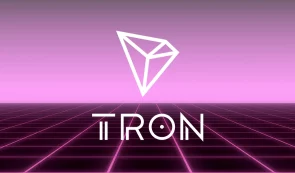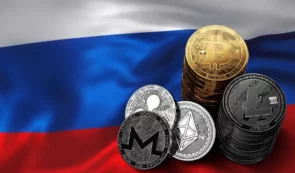Metaverse: Everything you Need to Know

The tech revolution is booming, and every day we see more companies integrating AI, blockchain, machine learning, and all sorts of groundbreaking technologies in different sectors – from the supply chain to banking services to telecommunications to healthcare.
A new contender has arrived, looking to transfer the community from one world to another. We are talking about the metaverse – a vision of many who believe it is the next iteration of the internet.
What is the Metaverse?
The metaverse is a shared, immersive, 3D virtual space where humans experience life in ways they could not in the physical world. While the technology is just beginning to gain ground, the author Neal Stephenson created the concept in his sci-fi novel Snow Crash in 1992. After that, scientists started working on VR-based internet databases.
The most recent interest in developing metaverse projects derives from Web3 – a concept for a decentralized iteration of the internet.
This immersive virtual world is facilitated by virtual reality (VR) and augmented reality (AR) headsets.
To put it in simple words, a metaverse is a network of 3D virtual worlds focused on social interactions.
Experts have made a list of seven technologies that will have the most significant impact on metaverse development over the next decade:
- artificial intelligence
- Internet of things
- extended reality
- brain-computer interfaces
- 3D modeling and reconstruction
- spatial and edge computing
- blockchain
How does the metaverse work?
Since the idea of the metaverse is mainly undeveloped, little can be said on how the technology could function. In general terms, you can say that this digital ecosystem is built on different 3D technologies, real-time collaboration software, and blockchain-based DeFi tools
Speaking in a session on the metaverse at the 2022 MIT Platform Strategy Summit, Lauren Lubetsky, senior manager at Bain & Company, outlined three possible scenarios for the future of the technology:
The metaverse remains a domain of niche applications consumers use for entertainment and gaming but stops well short of an all-encompassing virtual reality.
Large competing ecosystems control the metaverse — e.g., Apple and Android meta worlds – with limited interoperability.
The metaverse is a dynamic and open space, similar to the internet, but in 3D.
Key features
-
Immersive Experiences
Bringing games, concerts, and movies, educational encounters to life will be more authentic with implementing the metaverse. People can merge reality with the virtual world by using AR/VR technologies. Users can work from their homes in a virtual office, where they can interact with their colleagues and clients. The same goes for schools and universities.
-
Blockchain-based operations
Blockchain technology is considered a must when talking about the metaverse simply because the users need to safeguard their virtual assets and have digital proof of ownership during the exponential growth in data volumes, value, and significance of dependability and security. The metaverse’s concept is incomplete without blockchain due to the numerous drawbacks of centralized data storage.
-
DAO for governance
A decentralized autonomous organization (otherwise known as a DAO) is a governance body that uses blockchain and smart contracts to reach a consensus for various decisions. To ensure that everyone in the organization has the opportunity to participate in the governance process, all decisions in DAOs continue to be governed by proposals and voting processes. The procedure is vital for assisting participants in casting ballots on significant decisions on managing metaverse resources.
-
Avatars
A digital avatar is a unique way to express oneself; this is your digital persona. Avatars can be both animated and static. You can model your avatar to your liking – you can be original and make it your exact copy (body type, skin color, build, facial features, etc.), or you can recreate your favorite celebrities. More lifelike avatars might give viewers or anyone interacting with them a more immersive experience. With the help of keyboards, joysticks, mice, and specialized human-computer interfacing (HCI) devices, users may operate their avatars.
-
Artificial intelligence (AI)
AI is crucial to the metaverse, as it is the driving force behind corporate research in almost every field. It can be essential in helping companies manage their IT infrastructure. AI-powered chatbots are becoming more and more popular. In the Metaverse, AI bots with lifelike avatars can be employed for various purposes, including sales, marketing, and customer support.
-
The use of virtual land
Everyone can buy a piece of land in the metaverse using cryptocurrency. By definition, digital land is a form of NFT (non-fungible token). The size of the land refers to the actual number of pixels in a plot of metaverse real estate. Digital storefronts, virtual gaming, or even entertainment can be interacted with on virtual land.
-
Human-Computer Interface (HCI) technology
The metaverse consists of many diverse devices, platforms, and individual users on a big scale. The use of HCI in creating the virtual world – specifically, how to integrate user activities into the virtual world – is crucial to attaining this objective. The process of HCI refers to an exchange of information between humans and computers, which helps groups who need formal training and information on how to connect with computing systems.
-
Supporting Web3
Web3 is a term that represents the third era of the internet and the progression of user ownership and control over their online material, digital assets, and online personas. The metaverse requires a decentralized web for the virtual world to function, and Web3 may provide the much-needed foundation for connectivity.
How does one access the metaverse?
As we mentioned, there are two main technologies that are fundamental for the development and growth of the metaverse – AR and VR.
Virtual reality (or VR) is an unreal 3D world created through computer systems and audio-video equipment that allows users to interact with a virtual environment in a way that resembles our real world. You can also define VR with the term “non-physical reality.”
Gloves, vests, and even full-body tracking suits could enable more lifelike interaction with the virtual environment. The projection of images can be made not only on a monitor but also through stereoscopic glasses. Additional information is also given to the human senses through sound, which can be part of the simulation.
Augmented reality (or AR) is considered less immersive than VR as it adds digital overlays on top of the real world via a lens of some type. Users can still interact with their real-world environment. The game Pokémon Go is an early example of AR. Google Glass and heads-up displays in car windshields are well-known consumer AR products.
Metaverse-like experiences offered by gaming platforms such as Roblox, Decentraland and Minecraft can be accessed through browsers or mobile devices and a fast internet connection.
Whether VR and AR experiences turn out to be the primary interfaces of the metaverse remains to be seen.
The limitation of the metaverse’s development is due to the dependence on VR technology. Portable and expensive hardware is needed to gain access to the VR world. The problem is in the balance between the price and the design. Compact headsets have problems achieving the retina display pixel density needed for visual immersion. Current hardware development is focused on overcoming the limitations of VR headsets, sensors and increasing immersion with haptic technology.
Barriers to mass adoption
Safety
Excessive social media is one of the biggest concerns regarding the metaverse. Both mental and physical repercussions of being addicted to social media and video games can lead to severe health conditions such as depression, anxiety, and other harmful effects. You also have to consider the risk of increased risk for obesity and cardiovascular disease because of the sedentary lifestyle.
On another note, the metaverse could be used as an ‘escape’ from reality similarly to existing internet technologies, which could suppress one’s social functions.
Privacy
The user’s privacy is subject to serious concerns because companies that control the virtual world will likely collect users’ personal information through interactions and biometric data from wearable virtual and augmented reality devices. This information could be used for targeted advertising, raising further worries about spreading misinformation and losing personal privacy. The current state of the metaverse is immature, and the amount of data each company could collect is immense.
Feasibility
The lack of transparent infrastructure for both hardware and software, as well as governance standards, could cripple the development of the metaverse. Since we are talking about hundreds of millions, if not billions of people, the metaverse will require computational efficiency, unlike anything we have seen today.
Social issues
Currently, there is no way to restrict discrimination, exploitation, and prejudice in the metaverse. Biased content and abusive engagement could easily manipulate users in the virtual world. As Keza MacDonald from the Guardian stated, the main concern here is that disaster capitalists are just trying to make more money while the planet’s resources are dwindling.
Also, many people think this virtual environment could have a negative societal impact due to the strong addictive potential of the internet and the metaverse itself.
Criminal activity
Virtual crimes like sexual abuse, child grooming, and harassment are significant challenges within existing virtual reality social platforms and may be similarly prevalent in the metaverse. For example, minors engage in adult activities in applications such as VRChat and Horizon Worlds despite restrictive age requirements.
How can businesses use the metaverse?
Virtual events
Many people cannot travel and attend a conference or a lecture. While currently, many such events can be viewed both online and in person, the metaverse could provide a unique opportunity via a fully-fledged VR experience rather than just another video in a small window with comments underneath it – as in the case with Zoom and Google meet streams…
Advertising venue
E-commerce companies could further engage users by exposing them to direct advertising through metaverse platforms. Storytelling is one of the most effective methods for increasing brand awareness and identification. This type of engagement will eventually evolve into “story living” when the audience members have the opportunity to interact directly rather than just being passive listeners. There are several ways to promote your company in the metaverse, including branded gaming experiences, virtual items, and AR/VR showrooms.
Selling goods
Many companies offer such services, but as you probably can guess, the metaverse provides a more immersive approach. Using the metaverse, people can virtually try clothing or eyewear before deciding whether to buy it – this changes the whole concept of online shopping and simplifies the entire process for the customer. You can also see how new furniture would fit in their space without wondering how it will look once you buy it.
Most popular metaverse crypto projects
- Decentraland (MANA)
Decentraland is a very popular metaverse project that has procured a ton of projection in light of how people eagerly buy up plots of virtual land for millions of dollars. Notwithstanding, the most beautiful part of Decentraland is the way that it might be seen as a digital new beginning for fundamentally anything conceivable – and incomprehensible, too. Like this current reality, yet infinitely better.
Inside this metaverse, you’re prepared to shop for your #1 brands, go to events, meet new people, build new businesses, and, surprisingly, gamble. All of this has a veritable energy to it, which is why this metaverse stays one of the most stunning endeavors of its sort.
Decentraland is based on the Ethereum blockchain and is user-owned, allowing those who enter the platform to make their settings, images, business focuses, modernized establishments, and applications. MANA is the native cryptocurrency for the network, which can be actually purchased through different crypto exchanges.
- Axie Infinity (AXS)
Axie Infinity is a blockchain-based game that lets users earn money while gaming. Many have turned Axie into their regular job. The two tokens that are native to the network are AXS and SLP. AXS is the governance token that allows its owners to vote on the game’s future development plans.
At the center of this Ethereum blockchain metaverse project are Axie’s neighborhood advanced monetary forms AXS and SLP.
Each fill for different necessities inside the came. AXS, or Axie Vastness Shards, fills in as an organization token. Players who hold AXS get to settle on the game’s future headway plans, including updates and storehouse balance use. SLP (or Smooth Love Potion) can be earned as in-game rewards from battles, and it can also be used for breeding your creature (also known as axies).
As the game’s popularity exploded, these creatures became increasingly more valuable – a trend we hope to continue seeing growth. And since players can easily take the in-game currency and cash it out in the real world, that’s a model unlikely to go anywhere anytime soon.
-
The Sandbox (SAND)
Similarly to Decentraland, The Sandbox is a virtual world built on the Ethereum blockchain and focused on original content creation and gaming. Taking inspiration from Minecraft and Roblox, the Sandbox uses a 3D voxel approach to let its players use their imagination and create worlds in whatever way they want.
SAND is the platform’s ERC-20 utility token and is used throughout the entire ecosystem, supporting all transactions and interactions. Besides hosting incredible content-building experiences, the Sandbox allows its community to build games, assets, and applications on top of their land parcels. On the other hand, LAND is a virtual plot of land in The Sandbox virtual world. LAND can be used to create gaming experiences, rent to other users, and organize events and social interactions.
As a 3D environment, the space enables players to enjoy an enriched gaming experience, while its virtual nature eliminates all physical barriers. It facilitates the emergence of new types of social interactions, events, and forms of engagement.
Conclusion
Although the metaverse provides a wide variety of implementations, it is still in its very early stages of development. Not only that, but some people consider the whole idea to be far-fetched and impossible to create. In the meantime, giant corporations are investing billions of dollars in R&D and are trying to unravel the full potential of the metaverse. A good example is Meta. Previously known as Facebook, Meta rebranded and is now entirely focused on exploring the possibilities of the virtual world. Although the company is currently having a hard time with this endeavor, only time will tell whether this technology is possible and to what extent.







